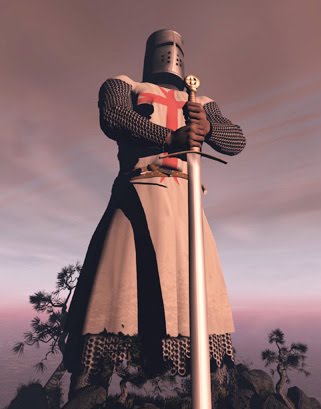Wednesday, December 19, 2012
GRAVEN IMAGES
“You Shall Not Make for Yourself a Graven Image...”
What does that really mean? Let’s see what the Catechism has to say about Graven Images in Catholic Churches.
Holy images Catechsim 476-477, 1159-1162, 2129-2132
476 Since the Word became flesh in assuming a true humanity, Christ’s body was finite.112 Therefore the human face of Jesus can be portrayed; at the seventh ecumenical council (Nicaea II in 787) the Church recognized its representation in holy images to be legitimate.113 (1159-1162, 2129-2132)
477 At the same time the Church has always acknowledged that in the body of Jesus “we see our God made visible and so are caught up in love of the God we cannot see.”114 The individual characteristics of Christ’s body express the divine person of God’s Son. He has made the features of his human body his own, to the point that they can be venerated when portrayed in a holy image, for the believer “who venerates the icon is venerating in it the person of the one depicted.”115
1159 The sacred image, the liturgical icon, principally represents Christ. It cannot represent the invisible and incomprehensible God, but the incarnation of the Son of God has ushered in a new “economy” of images:
Previously God, who has neither a body nor a face, absolutely could not be represented by an image. But now that he has made himself visible in the flesh and has lived with men, I can make an image of what I have seen of God... and contemplate the glory of the Lord, his face unveiled.27
1160 Christian iconography expresses in images the same Gospel message that Scripture communicates by words. Image and word illuminate each other:
We declare that we preserve intact all the written and unwritten traditions of the Church which have been entrusted to us. One of these traditions consists in the production of representational artwork, which accords with the history of the preaching of the Gospel. For it confirms that the incarnation of the Word of God was real and not imaginary, and to our benefit as well, for realities that illustrate each other undoubtedly reflect each other’s meaning.28
1161 All the signs in the liturgical celebrations are related to Christ: as are sacred images of the holy Mother of God and of the saints as well. They truly signify Christ, who is glorified in them. They make manifest the “cloud of witnesses”29 who continue to participate in the salvation of the world and to whom we are united, above all in sacramental celebrations. Through their icons, it is man “in the image of God,” finally transfigured “into his likeness,”30 who is revealed to our faith. So too are the angels, who also are recapitulated in Christ:
Following the divinely inspired teaching of our holy Fathers and the tradition of the Catholic Church (for we know that this tradition comes from the Holy Spirit who dwells in her) we rightly define with full certainty and correctness that, like the figure of the precious and life-giving cross, venerable and holy images of our Lord and God and Savior, Jesus Christ, our inviolate Lady, the holy Mother of God, and the venerated angels, all the saints and the just, whether painted or made of mosaic or another suitable material, are to be exhibited in the holy churches of God, on sacred vessels and vestments, walls and panels, in houses and on streets.31
1162 “The beauty of the images moves me to contemplation, as a meadow delights the eyes and subtly infuses the soul with the glory of God.”32 Similarly, the contemplation of sacred icons, united with meditation on the Word of God and the singing of liturgical hymns, enters into the harmony of the signs of celebration so that the mystery celebrated is imprinted in the heart’s memory and is then expressed in the new life of the faithful. (2502)
2129 The divine injunction included the prohibition of every representation of God by the hand of man. Deuteronomy explains: “Since you saw no form on the day that the LORD spoke to you at Horeb out of the midst of the fire, beware lest you act corruptly by making a graven image for yourselves, in the form of any figure....”66 It is the absolutely transcendent God who revealed himself to Israel. “He is the all,” but at the same time “he is greater than all his works.”67 He is “the author of beauty.”68 (300, 2500)
2130 Nevertheless, already in the Old Testament, God ordained or permitted the making of images that pointed symbolically toward salvation by the incarnate Word: so it was with the bronze serpent, the ark of the covenant, and the cherubim.69
2131 Basing itself on the mystery of the incarnate Word, the seventh ecumenical council at Nicaea (787) justified against the iconoclasts the veneration of icons—of Christ, but also of the Mother of God, the angels, and all the saints. By becoming incarnate, the Son of God introduced a new “economy” of images. (476)
2132 The Christian veneration of images is not contrary to the first commandment which proscribes idols. Indeed, “the honor rendered to an image passes to its prototype,” and “whoever venerates an image venerates the person portrayed in it.”70 The honor paid to sacred images is a “respectful veneration,” not the adoration due to God alone:
Religious worship is not directed to images in themselves, considered as mere things, but under their distinctive aspect as images leading us on to God incarnate. The movement toward the image does not terminate in it as image, but tends toward that whose image it is.



